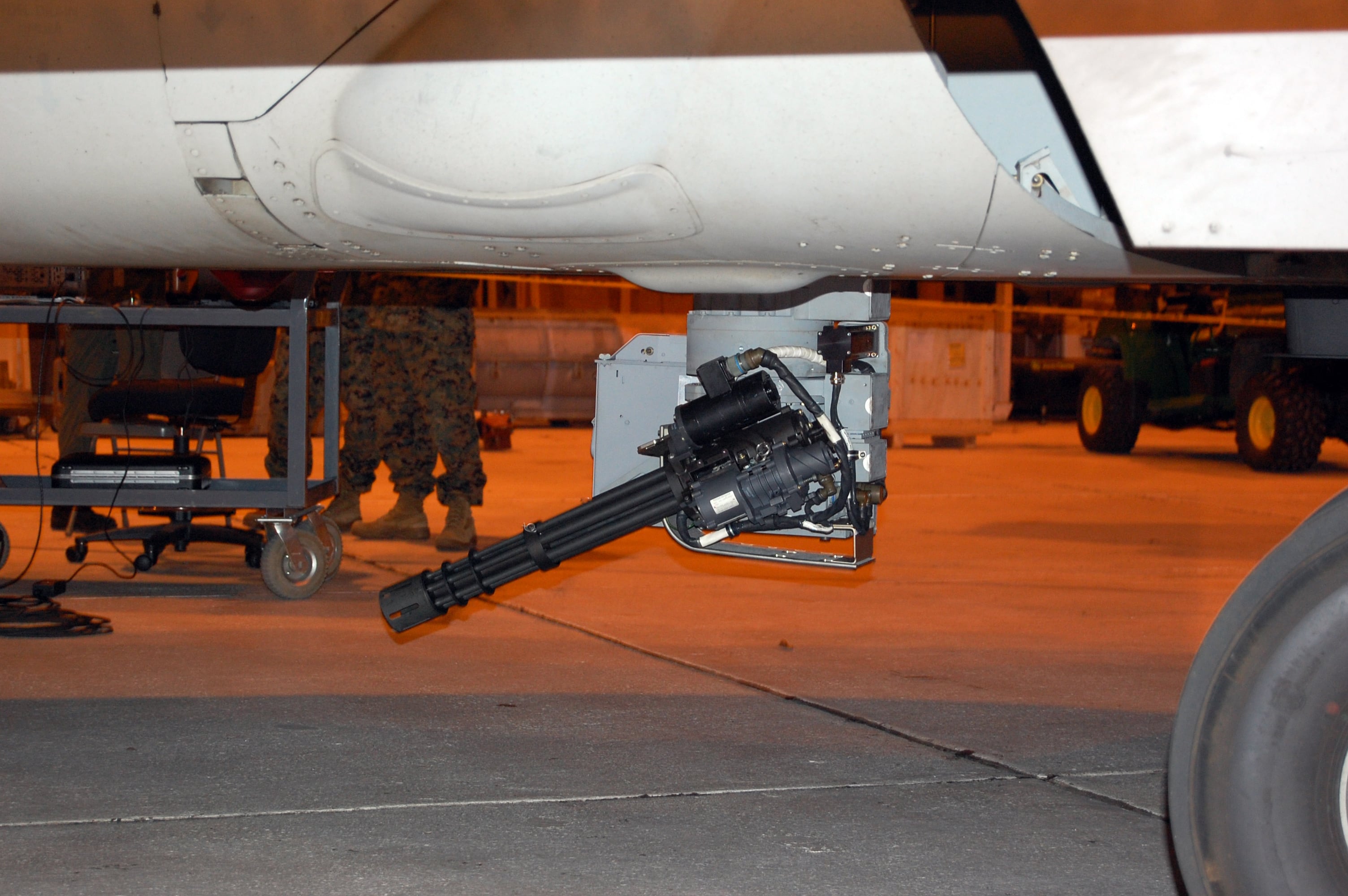The Marine Corps' most unique aircraft in the Marine Corps is going to get a bigger punch.
A Marine Corps planning document shows that officials want to arm the MV-22B Osprey with more weapons so the aircraft can support the service's new crisis response forces that carry out missions like embassy evacuations. Special Purpose Marine Air-Ground Task Force-Crisis Response, a shadowy group that helps protect U.S. embassies in some of the most dangerous cities.
An "enhanced weapon systems is in early development to increase all-axis, stand-off, and precision capabilities," according to the service's recently-released, 10-year Marine aviation plan says. The Corps isn't saying much about the plan to arm V-22s, nor has it said which weapons would go in the aircraft. Marine officials did not provide answers to questions about the proposal.
Officials at Headquarters Marine Corps said the aircraft's flexibility and versatility lets the service add capabilities, and they are considering arming the Osprey with "a greater weapons capability than currently installed."
Capt. Dustin Pratico, a Marine Corps spokesman, said there are several locations on the tiltrotor where the weapons could be installed, depending on the type and purpose of the weapon. Defense contractors are looking for options both by internal research and by developing new concepts, and there is no timeline for installing these new weapons on the V-22, he said.
The V-22's existing aircrew would operate the new weapons, but depending on the exact weapon put on the aircraft, more crew members could be added. They would be trained to handle the specific weapon system, Pratico said.

A 7.6 mm belly-mounted turret gun, known as the Interm Defense Weapon System.
Photo Credit: Marine Corps
The aviation plan, however, does shows that special purpose Marine air-ground task forces like those designed to respond to crises in Africa and the Middle East PMAGTF-CR will use armed V-22s. Those units have at group provided s security support and evacuation assistance at embassies in Iraq, South Sudan, and Libya. embassies, including ones in Libya and Yemen.
"Enhanced offensive weapon systems on the MV-22 will provide increased capabilities for the SPMAGTF-CR and employment options to the combatant commander," the plan states ays. "The future Marine Expeditionary Force will require an assortment of light-weight precision weapons with scalable lethality. As the MAGTF becomes digitally interoperable, Marine aviation will become more lethal through net-enabled weapons that take advantage of our ability to out-pace our adversaries."
A net-enabled weapon is a munition connected to a datalink that allows commanders to adjust its trajectory mid-flight.
Loren Thompson, the chief operating officer for the Lexington Institute, said the V-22 could easily be adapted to carry either GPS- or laser-guided munitions at low cost. Hardpoints, - the structures that hold the munitions from outside the aircraft, - would need be installed and the aircraft would need to be wired for cockpit displays. He said that Lockheed Martin's Hellfire missile, Raytheon's Griffin missile, the Joint Air-to-Ground Munition, or Boeing's Small Diameter Bomb, could work well.
"[The] MV-22 is already the most versatile airframe in Marine Corps' history, but on-board carriage of air-to-ground munitions would open up an array of additional missions," Thompson said. "The MV-22 crew would be better able to protect Marines on board and support those on the ground in rapidly changing tactical situations."
Thompson said it would It will take some time to figure out how an armed MV-22 would fit into a fleet that already includes the firepower of F-35B and the AH-1Z Cobra, but having weapons on the same airframe that transports troops would be sounds like an important operational enhancement."
While it may be lightly-armed, the V-22 was designed as a personnel and cargo mover. That plan shows that it It does, however, have systems that make it more survivable in a hostile environment, though. the plan shows. The aircraft has a missile warning system, a radar warning receiver and flares. The plan also shows that the V-22 is scheduled upposed to receive an upgrade to a counter-infrared missile system in 2016, as well as "enhanced defensive weapons."
Arming the V-22 would help solve the problems of needing armed escorts for the tiltrotor aircraft, said Dakota Wood, a former Marine officer who is now an analyst at the Heritage Foundation. The V-22's range and speed make it tough for AH-1 or AH-64 helicopters to provide this capability. Fixed wing aircraft can provide escorts but they might not be available for long-range raid or rescue missions, Wood said.
Still, he stressed that arming the V-22 likely wouldn't turn it into an attack platform, Wood added.
"The effort is meant to provide improved defensive capabilities and an organic ability to reduce threats in an operating zone where an MV-22 force might be operating without supporting air cover," he said.
If armed with missiles, they would most likely be on the tilt-rotor's belly so that the weapons wouldn't have to worry about clearing the aircraft's large propellers or a location along the fuselage, he said.
Aircraft that weren't designed for a firefight have been armed and fought in combat before. The P-3 Orion, a patrol airplane and submarine hunter, fired its first shot in combat two decades after it started carrying missiles and 41 years in operations.
The two shots came on March 23, 2011 during Operation Odyssey Dawn, a United Nations-backed air campaign over Libya. Airspace had already been cleared of threats and a 12-meter Libyan vessel was firing at random targets in a port. he patrol craft was over a 12-meter Libyan was firing at random at a port. The P-3 fired two missiles AGM-65F Mavericks at the vessel, damaging it and forcing it to hobble to port.
